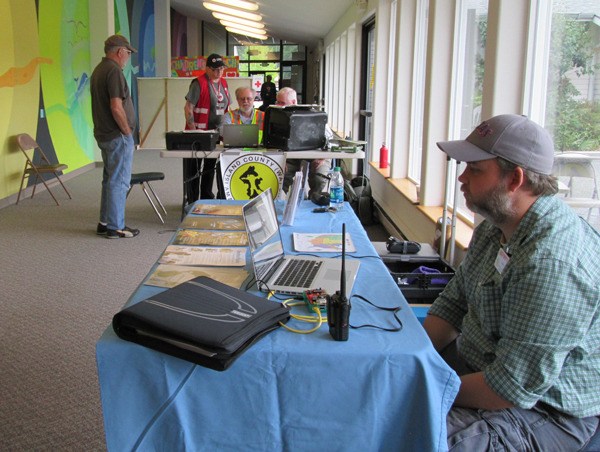The Deception Pass Bridge is impassable. Ferries can’t dock. Major roads all across Whidbey Island are blocked.
Power lines are down and so is the Internet.
Experts say it’s not a matter of “if,” but “when” a magnitude 9.0 megaquake, followed by a tsunami, will strike the West Coast. The result will be widespread damage and casualties.
Here on Whidbey Island, we’ll face the extra challenge of potentially being cut off from the mainland.
Emergency personnel from public and private agencies this week practiced how to handle that worst-case scenario as part of a large, multi-state drill dubbed “Cascadia Rising.”
The exercise is the biggest of its kind conducted in the Pacific Northwest. On Whidbey Island, most of it happened out of public view and began Tuesday with a pretend megaquake.
Island County’s emergency operation center is located in the main Oak Harbor fire station off Whidbey Avenue. The Navy set up its own temporary operation center in tents at Naval Air Station Whidbey Island.
Workers from multiple agencies practiced how to work together to assess the damages and fix problems such as blocked roads and downed lines, said Eric Brooks, who runs the Department of Emergency Management for the county.
“We’re trying to restore the infrastructure and help our island community,” he said.
On Wednesday, Red Cross workers practiced setting up a shelter in Freeland, at the Trinity Lutheran Church, and Thursday Coupeville NET set up a volunteer reception center in Coupeville to deal with mobilizing those who could help after a disaster.
Also practiced was the receiving of medical supplies dropped by an Army National Guard Black Hawk helicopter in the empty field behind the City of Oak Harbor’s municipal shop.
Preparing for a natural disaster isn’t a one-time event in Island County. Brooks said he is planning for quarterly drills.
The Navy also participated under its own operational name for the exercise, “Citadel Rumble.”
“My first priority is to take care of our base facilities and military members and their families following a natural disaster and to get the base up to full operational capability as quickly as possible,” said NAS Whidbey commanding officer Capt. Geoff Moore.
While getting NAS Whidbey back on its feet and operable after a disaster is the skipper’s first priority, Moore said the Navy will be ready to help the surrounding communities.
Officials at the Navy base have the authority in a disaster to help immediately “to save lives, prevent human suffering or mitigate great property damage,” he said.
The Navy works with civilian agencies to prepare for natural disasters and considers what local communities might need. For instance, the outlying field in Coupeville used for jet carrier landing practice could be used as a staging area for local community relief efforts.
“We put ourselves through as rigorous an exercise as possible to maximize preparations for such events,” Moore said.
“The bottom line is the better we train, the more effective we will be when it really counts.”



